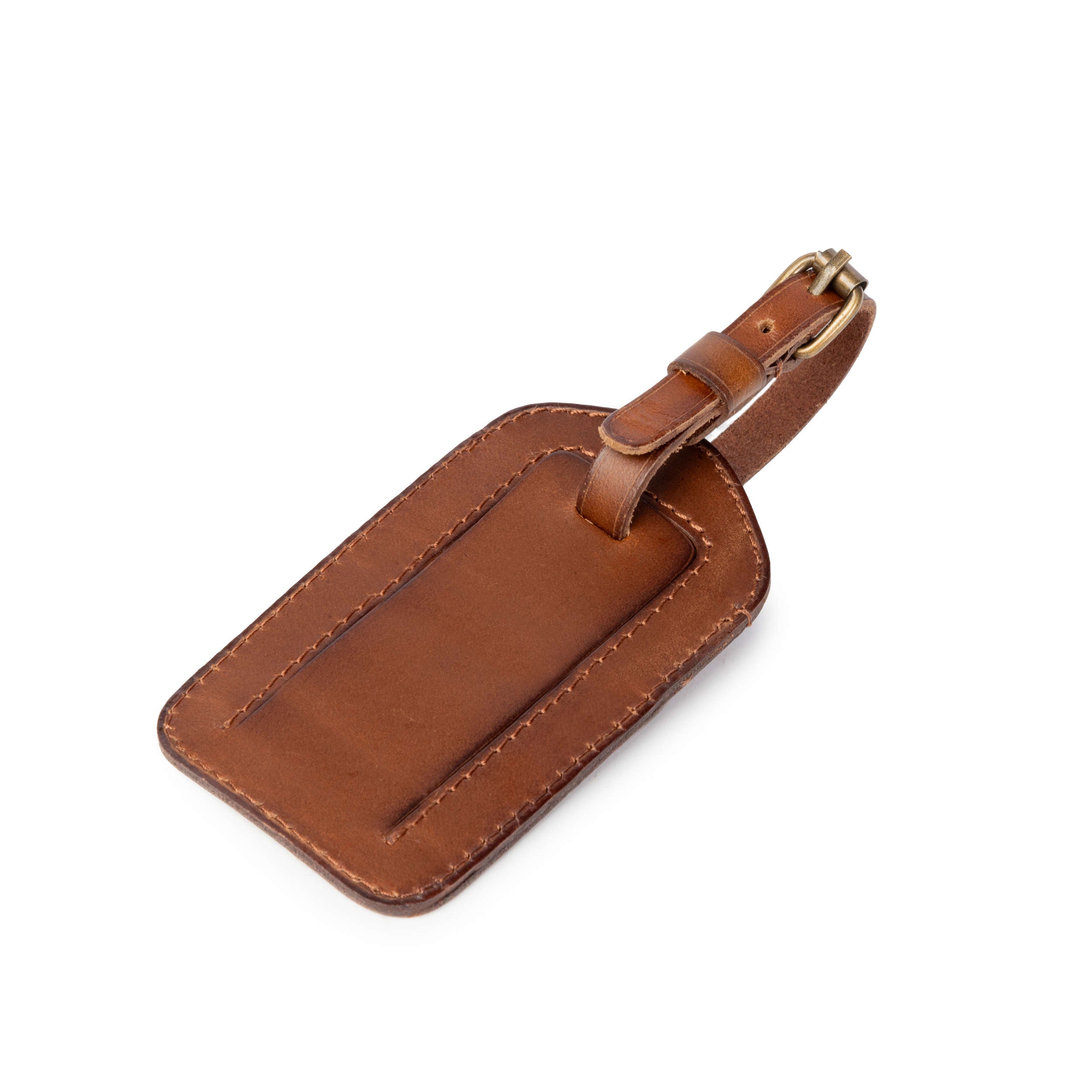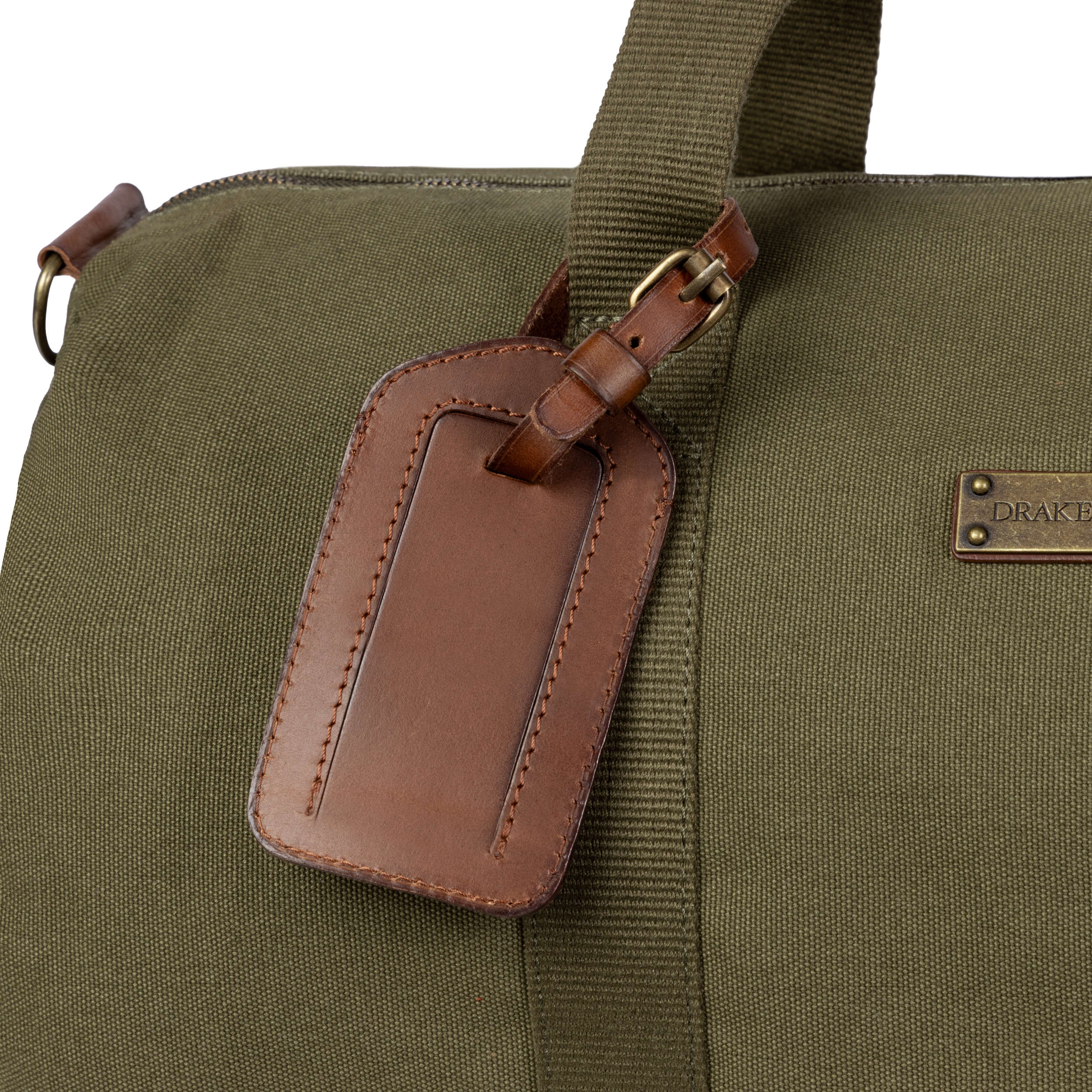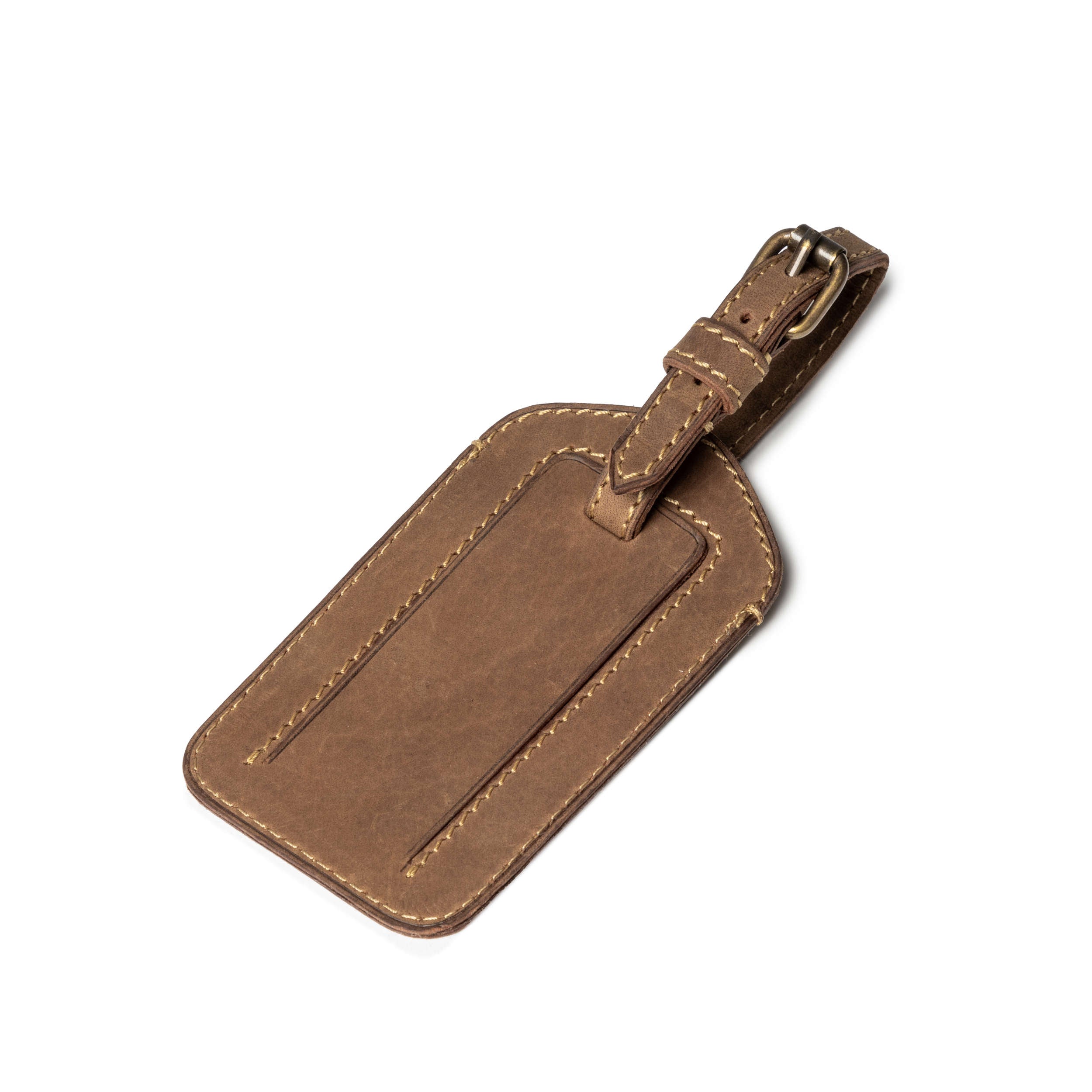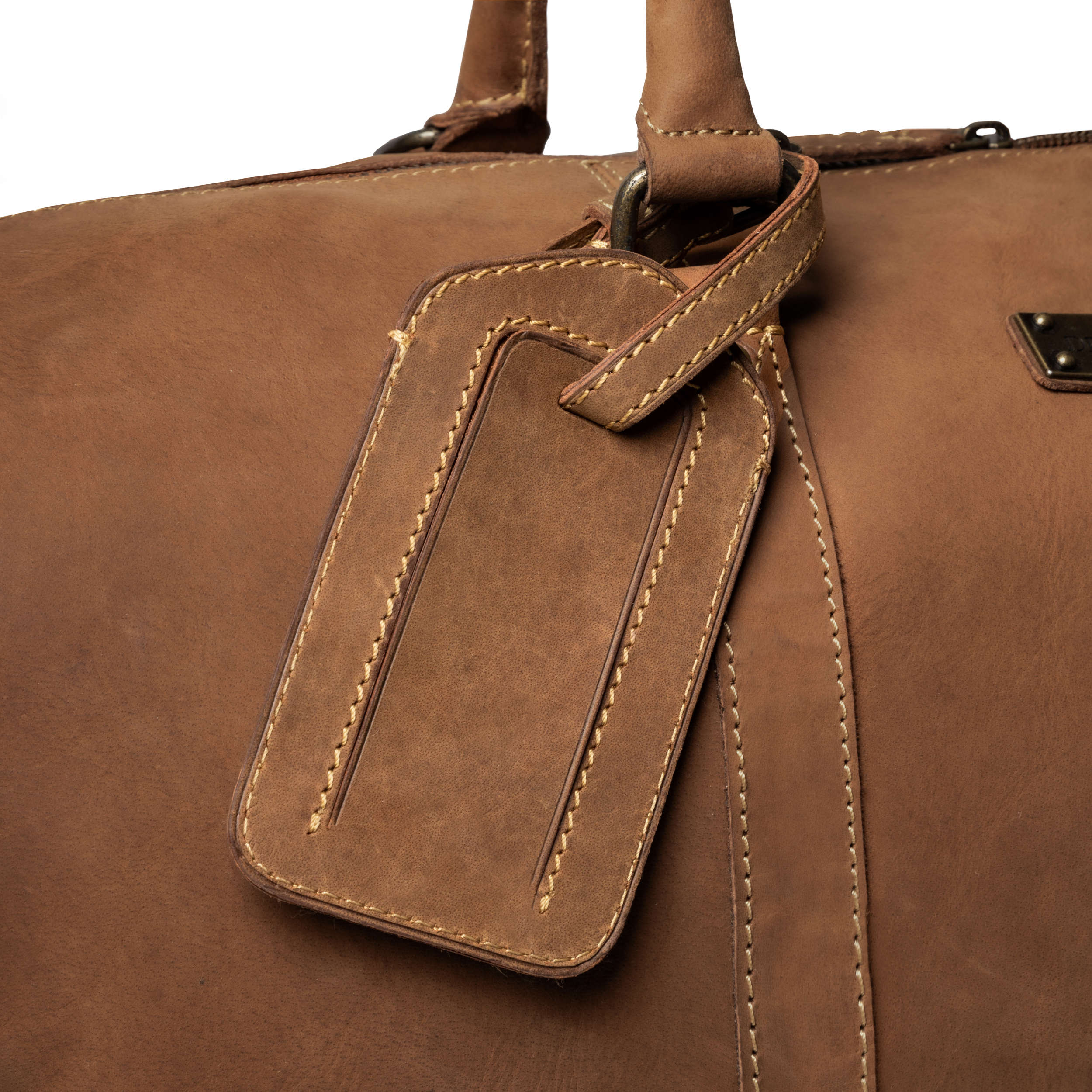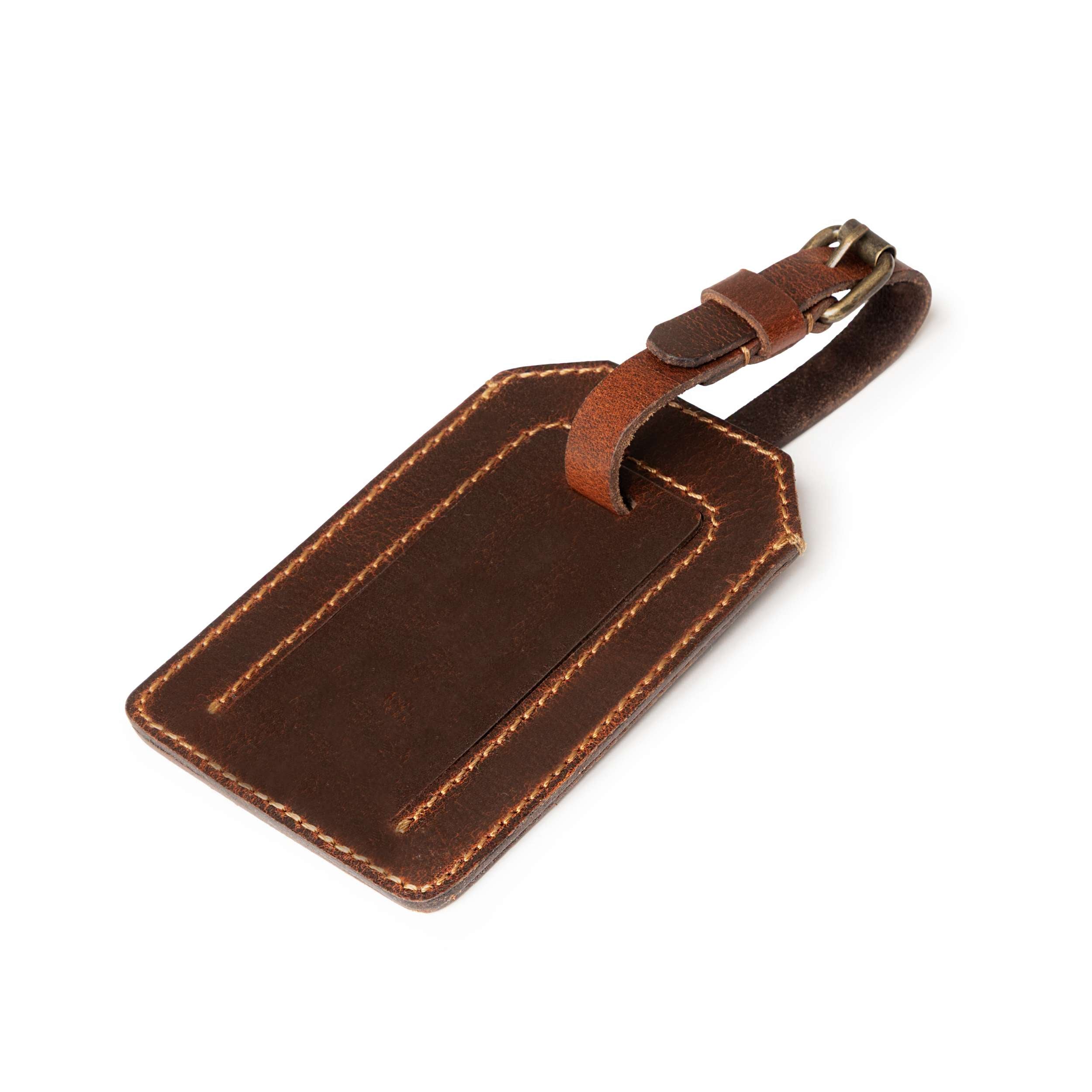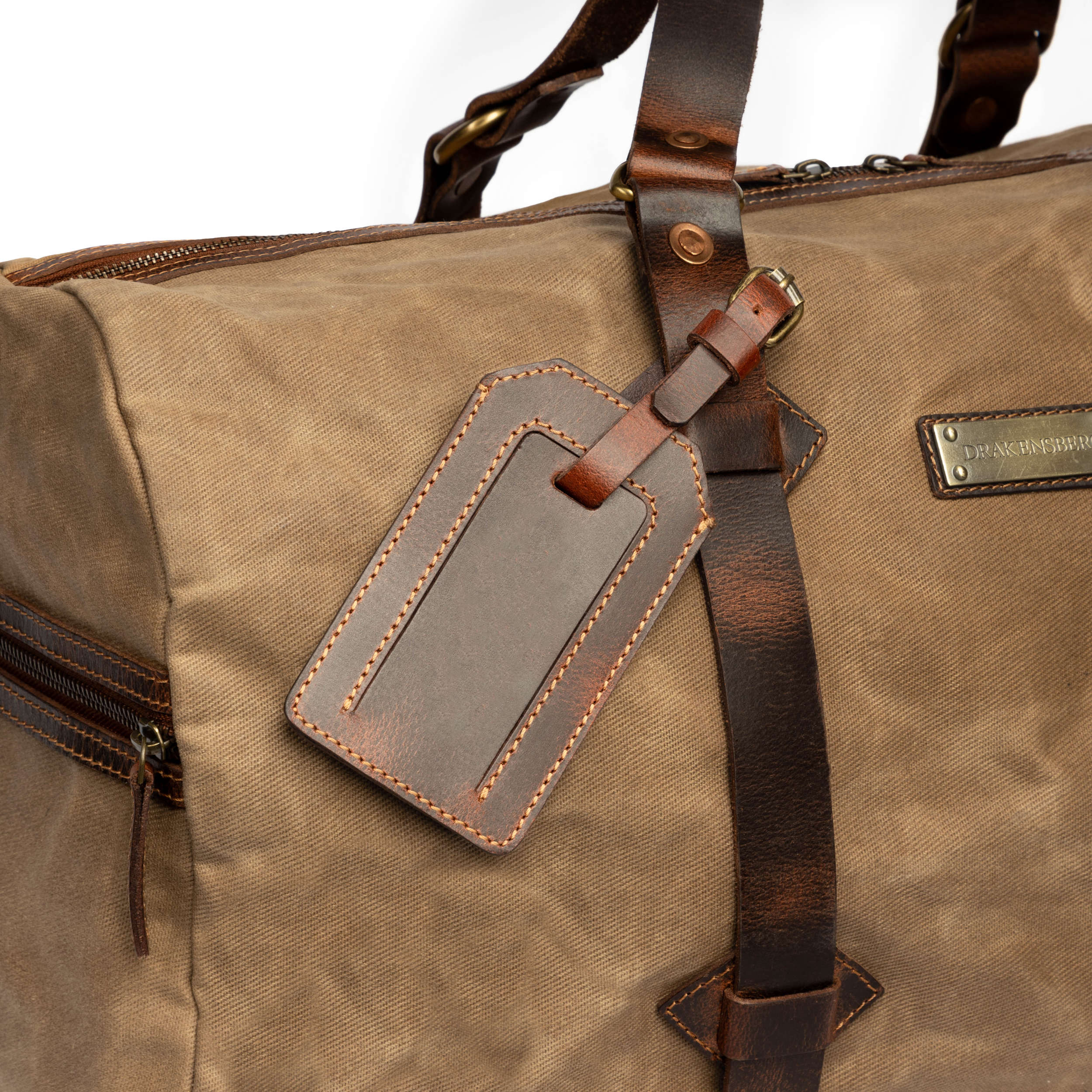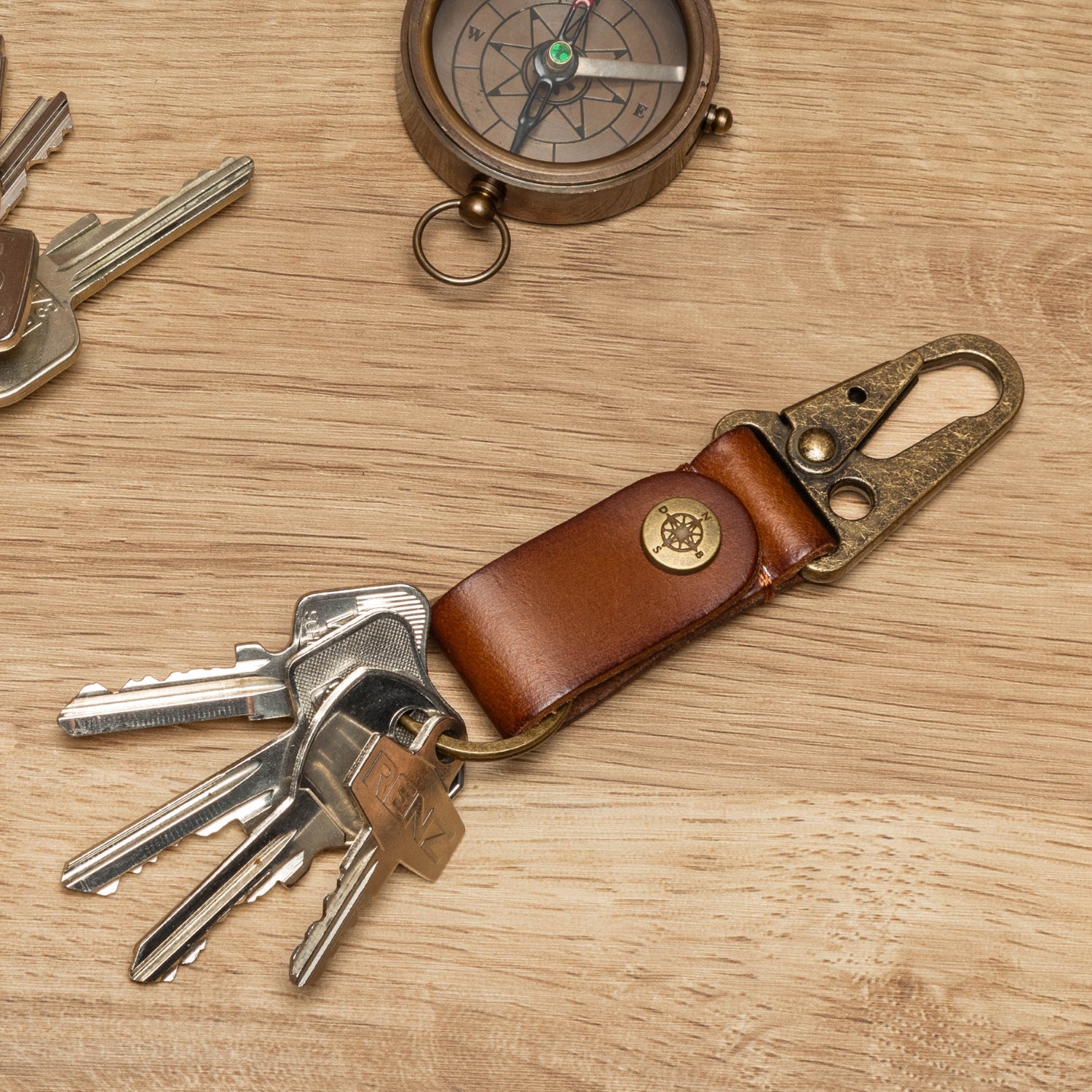Individual leather luggage tags, timelessly beautiful
Accompany your adventures with our elegant leather luggage tags. Handcrafted and timeless, they give your luggage character and class. Every patina tells of the many journeys, every handle a connection to new horizons. Your new travel companion - practical and stylish.
Filters
Why do I need a leather luggage tag?
Luggage tags are handy accessories that attach to luggage to make it easily identifiable and avoid confusion or loss while traveling. They carry important information such as the owner's name, address and contact details. Here are some reasons why luggage tags are useful:
ID:
At busy airports or train stations, it can be difficult to identify your luggage from the crowd. A luggage tag allows other travelers and staff to quickly identify your suitcase or travel bag.
Avoiding loss:
A highly visible leather tag reduces the risk of your luggage being lost or mixed up. If it accidentally ends up in the wrong hands, the finder can easily contact you to return it.
Smooth travel:
Luggage tags with your contact information minimize the effort and time needed to find lost luggage. This is especially helpful if you are in a hurry or traveling to a new area.
Personal style:
Leather luggage tags are not only functional, but can also add a personal touch to your luggage and reflect your style.
Choosing leather as a material for luggage tags brings further advantages:
Durability:
Leather is known for its durability and robustness. A leather luggage tag will withstand the rigors of travel and develop a patina of character over time.
Aesthetics:
Leather gives the tag an elegant and appealing look. It exudes class and style, which contributes to a sophisticated look for your luggage.
Uniqueness:
Each piece of leather is unique in texture and color. A leather luggage tag is therefore an individual accessory that gives your luggage a personal touch.
Sustainability:
High-quality leather is often sustainably produced and can be an environmentally friendly choice, especially when it comes from ethically raised animals.
Since when have luggage tags existed in the classic form?
Luggage tags have an interesting history. Originally they were used as simple, functional labels to identify luggage while travelling. Over time, however, they have evolved into versatile accessories that are both practical and stylish.
Early use:
The use of luggage labels or tags can be traced back to the 19th century. At that time, simple paper labels containing information such as the owner's name and destination address were stuck to luggage. This made it easier to identify and transport luggage on trains and ships.
Development in air transport:
With the advent of commercial air travel in the first half of the 20th century, baggage labeling became even more important. Airlines began attaching colored ribbons or tags made of cardboard or plastic to the handles or straps of suitcases to quickly identify and sort them. These tags typically included the passenger's name and flight number.
Stylish development:
In later years, luggage tags evolved from purely functional labels to stylish accessories. With the rise of travel and lifestyle trends, people started making luggage tags out of different materials such as leather, metal or fabric. These tags were often customized with unique designs, logos, initials or personal information and served not only for identification but also as an expression of personal style.
Modern diversity:
Today, luggage tags are available in a variety of materials, shapes, sizes and styles. They can be made of leather, plastic, metal, textiles and other materials. Many people choose luggage tags with custom designs, colors or even personalized engravings to emphasize their personal style or to use as a gift.
Overall, luggage tags have evolved over time from simple identification to versatile accessories that are both functional and aesthetically pleasing and can reflect the personality of the owner.
Where and how do you properly attach a luggage tag?
Luggage tags are typically attached to the bag in a visible and easily accessible location for quick identification and handling. Here are some common places you can attach a luggage tag:
On the suitcase handle or travel bag handle:
Many luggage tags have a loop or strap that can be placed around the handle of the suitcase. This is a convenient position as the tag is easily visible and remains easily accessible when lifting the luggage.
Side strap or carrying strap of the bag:
If your luggage has side straps or a removable carrying strap, you can attach the luggage tag to one of these places. This can be especially useful if your luggage does not have conspicuous handles.
Hooks or eyelets on the suitcase or travel bag:
Some luggage tags are equipped with a hook or eyelet that you can attach to a loop, ring or other suitable place on your luggage.
Using a carabiner or clip:
A snap hook or clip can be used to attach the luggage tag to different locations on your luggage, depending on what is most convenient for your particular luggage.
Tag loops on luggage:
If your suitcase or travel bag has a special tag loop, you can easily attach the luggage tag to it.
Make sure the luggage tag is securely attached to prevent it from accidentally falling off during transport, but it should also be easily removable in case the baggage needs to be opened by flight crew or security checkers.
The choice of attachment location depends on your luggage, your personal comfort and accessibility. Choose a position that is most convenient for you and makes your luggage tag highly visible to ensure smooth identification while traveling.



